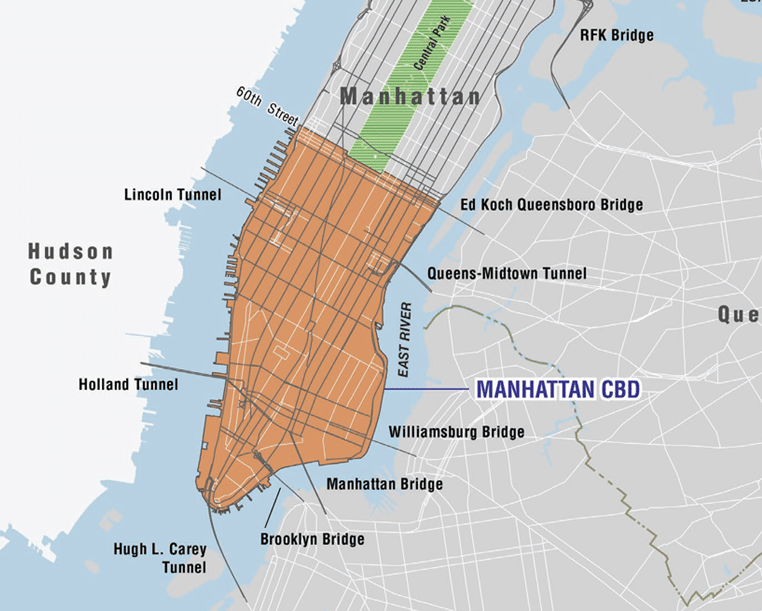Starting in mid-June, 2024, New York City will start charging motorists $15 (or more) to enter a designated zone in Midtown Manhattan. The Metropolitan Transportation Authority (MTA) calculates that this toll will generate around $1 billion annually.
This program was proposed years ago but faced many delays and court challenges. MTA contends that congestion pricing will alleviate traffic congestion and reduce pollution. It also asserts that it will enhance public transportation as the monies raised will be used for substantial upgrades to the subway system, commuter railroads and buses. However, the program clearly represents also another way for New York City to “tax” its motorists.
Where is the Toll Zone?
The toll zone starts at 60th Street and continues south all the way to Battery Park on the southern tip of Manhattan. While major highways like the FDR Drive, the West Side Highway, and the Battery Park underpass are exempt, drivers will incur toll charges if they exit onto a street within the congestion zone. North of 60th Street in Manhattan is not part of the congestion zone.
How Much Will Drivers Be Charged?
The toll charges currently are as follows for a single daily trip:
- Passenger vehicles: $15
- Small trucks: $24
- Large trucks: $36
- Motorcycles: $7.50
- Taxi drivers: $1.25 per ride
- Uber, Lyft, and other ride-shares: $2.50 per ride
- During rush hours, between 5 a.m. and 9 p.m. on weekdays, full rates apply. On weekends, from 9 a.m. to 9 p.m., the full rate is in effect. Outside these peak hours, the toll is approximately 75% lower, around $3.75 for a car.
How is the Toll Paid?
Drivers will be billed via their E-ZPass tags, similar to other toll roads, bridges and tunnels. For those without an E-ZPass, the registered owner of the vehicle will receive a bill by mail.
Are There Exemptions to the Toll?
Authorized emergency vehicles such as ambulances and fire trucks, as well as government vehicles engaged in public works, are exempt. Transit and commuter buses (excluding intercity buses) and qualifying vehicles transporting individuals with disabilities are also exempt.

